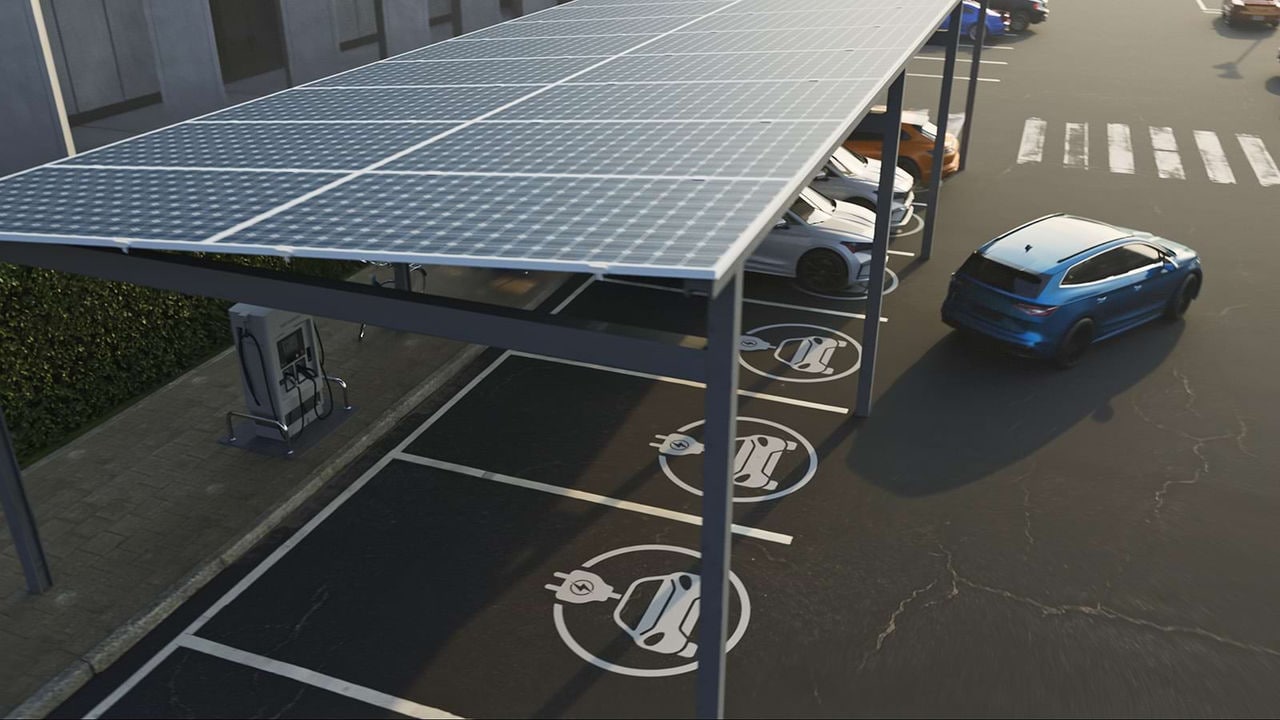BEV adoption gains momentum after 2024 slowdown
After a slowdown in 2024, battery electric vehicle (BEV) adoption is gaining some more momentum again, with BEVs projected to constitute 18–22 percent of all new car sales and roughly 3 percent of the total light vehicle fleet in 2025 across Europe (EU27+EFTA+UK). Looking ahead to 2035, BEVs are expected to account for 70–96 percent of new sales and 23–34 percent of the total parc, reflecting a typical S curve adoption pattern that varies widely across markets—from over 90 percent in Norway to just 5 percent in Italy in early 2025. EU’s flagship CO2 emission reduction scheme timing and extent, growing trade barriers and technological advancement are key drivers behind the adoption outlook range to 2035.
Unlocking the next phase of mass adoption
To unlock the next phase of mass adoption, we zoom into three critical pillars:
i) affordable, widely available BEV models;
ii) accelerated infrastructure rollout; and
iii) a seamless user experience.
Cost competitiveness and infrastructure growth
Segment B and C vehicles are now increasingly cost competitive with their internal combustion counterparts even on upfront cost, and a slate of new models (e.g., Renault 5 ETech, VW ID.2all, Fiat Grande Panda) will further drive down entry level prices to €25–30 k. Meanwhile, public fast charger deployment has grown by 75 percent from 2022 to 2024—outpacing BEV growth—and national networks now total 140 000 DC chargers across Europe on top of over 740 000 AC charger, decreasing any potential range anxiety. Public charging provides a competitive energy cost per kilometer for EVs vs petrol vehicles – the advantage increases the more charging one can do privately. Nevertheless, according to our e-Readiness survey BEV drivers still cite cost, wait times, availability, and site convenience as the top areas for improvement in public charging.
A highly contested EV charging ecosystem
The EV charging ecosystem has become highly contested, with over 1 000 players spanning seven distinct “ways to play” from hardware specialists and software providers to integrated solution operators and energy services firms. Despite this dynamism, scalability remains a challenge: many chargepoint operators (CPOs) and hardware manufacturers report negative EBITDA margins as they prioritize network growth over near term profits and software providers burn through their financing to build the winning platforms.
This has led to a wave of market exits and bankruptcies among smaller players and improving profitability is at the forefront for the industry, based on our interviews with CEOs across the industry. While stock-prices of listed players continue to be impacted by the less bullish EV outlook, leading CPOs and software platforms continue to attract strong funding support for proven rollout strategies (series B funding for Monta, Ampeco in 2024; debt and equity funding for Ionity and others in 2025).
Despite the fragmented landscape, we observe the emergence of early market leaders that are likely to lead the market consolidation and profitability drive in the coming years.
Beyond charging: Unlocking new revenue streams
Looking beyond core charging services, site-level battery storage, onsite renewable generation, and integration with home energy systems and aggregation across assets are emerging as key levers to optimize costs, manage peak loads, and unlock participation in flexibility market and other recurring revenues. The deployment of vehicle-to-grid ready vehicles is expected to further accelerate the opportunities. By 2035, total charging demand in Europe is expected to reach 200 TWh, served by some 55 million installed charge points—split roughly 50 million private AC units and 5 million public DC fast chargers. This shift will move the private-to-public charging mix (in terms of energy delivered) from over 75-25 percent today to 62-38 percent by 2035 underpinned by growth in demand for public charging.
The path to profitable growth
The path to profitable growth in this mass adoption era requires strategic focus on scalable partnerships across traditional industries, targeted site selection, user-centric digital services, and deeper integration into the wider energy ecosystem. With robust regulatory support, technological advances, and evolving business models, the European EV charging market stands at the cusp of transforming from a high growth, low profit frontier into a maturing, value accretive industry.
Ready to dive deeper?
Download our report and get in touch with our experts.
Download our insights
Fill out the form and you will receive a link to download the report.
More insights
Stay ahead with sector-specific insights with our newsletter.
Contact us
Milos Bartosek
Director, Oslo, Strategy& Nordic
Panos Stergiopoulos
Director, Strategy&, PwC United Kingdom
Partner, Strategy& Germany
Senior Executive Advisor, Strategy& Germany



